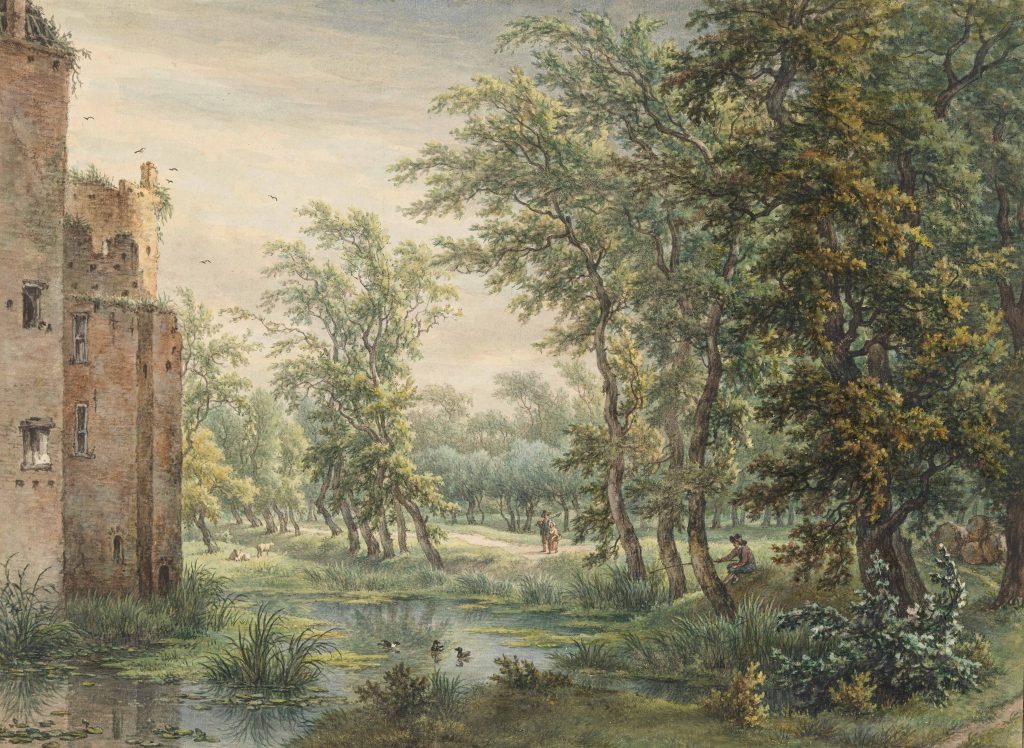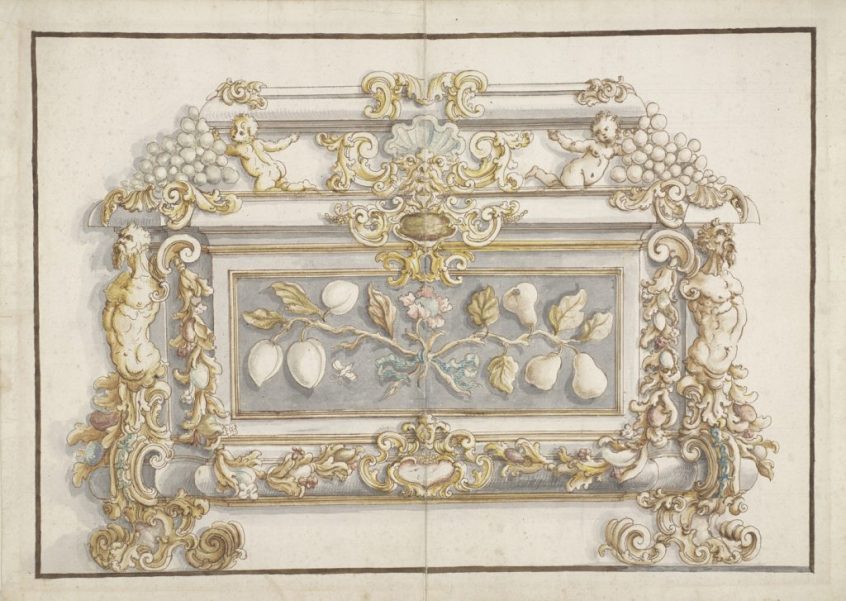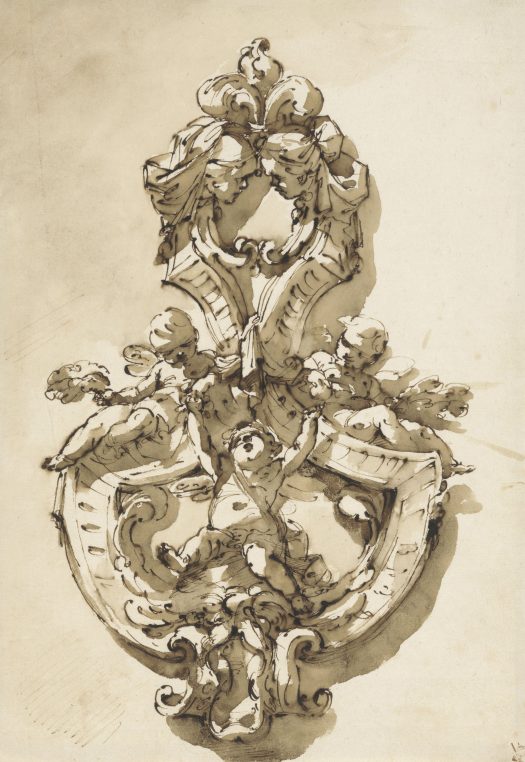
Egbert van Drielst, Douves and ruins of the Haar Castle in Haarzuilens, 1802, Royal Belgian Museum of Fine Arts, photo Johan @artphotosolution
Even the charming smile of Reinier Baarsen, curator of drawings at the Rijksmuseum, could not entirely dissipate the sadness of everyone at the Custodia Foundation, where the 25 staff are still mourning the sudden death of their cherished director Ger Luijten last December, but the quality of the two exhibitions helped everyone’s spirits. Luijten had conceived with each curator, “Process” decorative arts drawings from the Rikjsmuseum and “The most marvelous (XVIII th century Dutch) drawings” from the Royal Belgian Museum of Fine Arts collected by Josephus and Jean de Grez. So he was still with all of us, while we were admiring the very rare pieces.
It was fascinating to hear the multiple stories, that Reinier Baarsen had to tell about how he acquired the 200 drawings of decorative arts in the last ten years, for the Rijksmuseum. From “Ingenio” to “disegno”, from idea to drawing, “drawing is father to all arts” as Vasari stated… Some were drawn beforehand as to entice clients to buy the pieces of furniture or elements of decor. Others were drawn up to 100 years later to keep track of the object like this exceptionally modern silver cup by Adam van Vianen made in 1625. The two pieces are shown together giving the drawing an extraordinary value. A project for a table center in silver from Augsbourg is anonymous while the one for a knocker is attributed to Ubaldo Gandolfi. This exhibition is about the ingenuity and historical culture of the curator and the wealth of information that we find in objects…
The drawings are listed in 12 different chapters stating their relationship to the decorative pieces. Some drawings are just studies, others are technical full of detail on the making, some are like those of Luigi Valadier, a testimony to the Roman aristocratic and papal commissions. Others are just fantasies which will never be made. But they all have a story like this drawing bought at Hotel Drouot which was described as “baroque drawing” and is really the project for a sleigh, maybe Austrian, of which Baarsen found an example at the Kunsthistorishes Museum in Vienna or this other project for a silver center piece by Claude Ballin II found in Zürich. The actual object is owned by a private British collector and features in photo. The same is true of precious box in precious stone, by Giovanni Battista Foggini which now belongs to the National Trust.
What is wonderful about this show is that you can like a piece for its aesthetical qualities or just for its technical details in furniture making. Every design student in the decorative arts should be fascinated and I am sure that arts experts are already queueing up to see it. To think that a museum can make a new collection of drawings in ten years is also quite fascinating. You just need the right man!
Downstairs, the treasures from the Royal Belgian museums were introduced by Stefaan Hautekeete, who lauded the generosity of the de Grez family based in the city of Breda. Three generations of collectors Arnoldus Josephus Ingen Housz in the 18 th century (a contemporary art collector in a way), Josephus de Grez in the 19 th century and Jean de Grez, his son, who willed the collection to the state in 1911. Out of the 4 250 drawings, eighty were carefully selected for this show. It is the largest collection of Dutch drawings outside Holland.

Aert Schuman, Two indigenous passereaux, 1759, Musées royaux des Beaux Arts de Belgique, photo Johan @artphotosolution
I was amused to find a large watercolor of the Haar, the famous estate owned by the Van Zuylen and loved “The drawing lesson” and “An old man seated leaning on his stick” by Abraham van Strij. Two drawings of the funeral march for Princess Anna of Hannover in the Hague on February 23, 1759 are also beautiful. Interestingly a few of the artist had French names like Isaac de Moucheron or Paul Constantin de la Fargue, probably descendants of Huguenots.
The amount of research and culture involved intense to exhibitions is fabulous and you will enjoy the charm and serenity of Fondation Custodia. No-one has been named to follow in Ger Luijn ‘s steps yet but it could be anyone who speaks fluent dutch including an American scholar mentioned Hans Buys one of the curators of the foundation.
Until May 14 at Custodia Foundation. Excellent catalogs are published for both exhibitions.
Share this Post






2 Comments on “At Fondation Custodia, life is picking up again”
Excellentes observations. Je vais religieusement visiter chaque année la Fondation Custodia à l’occasion des nouvelles expositions et c’est un pur bonheur. Merci de me faire revivre ces instants.
Such a great review Laure of the Custodia exhibition ! Sorry to have missed you in Paris, but happy you got to know our friend Reinier. The Collection looks perfect in Custodia, and loved being there, although we all missed Ger.